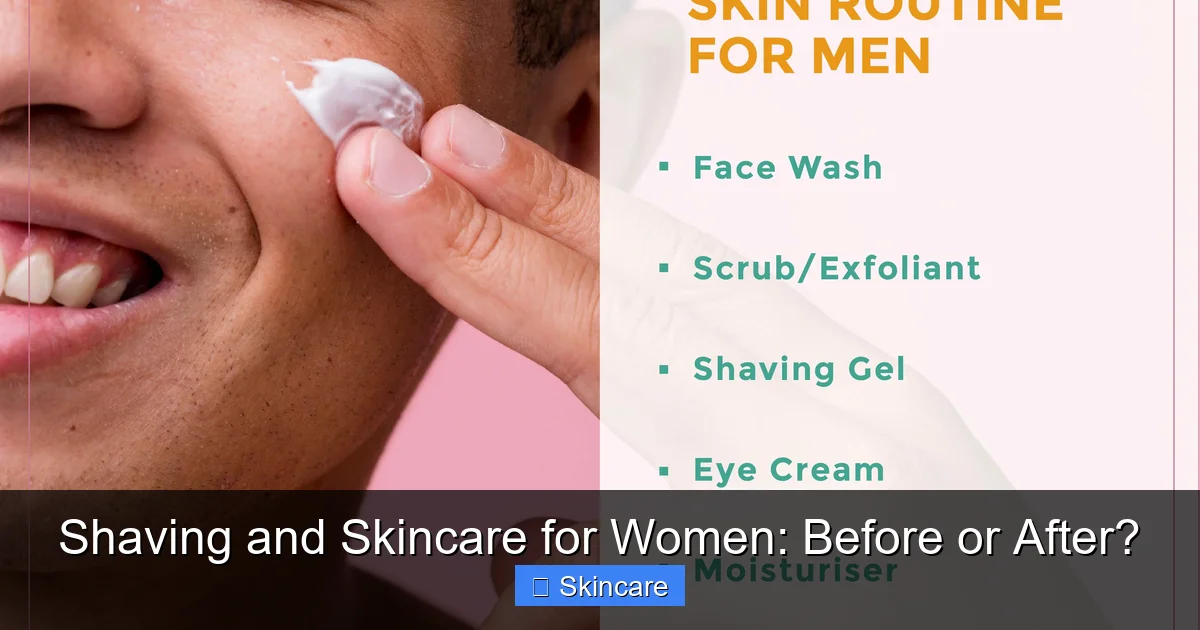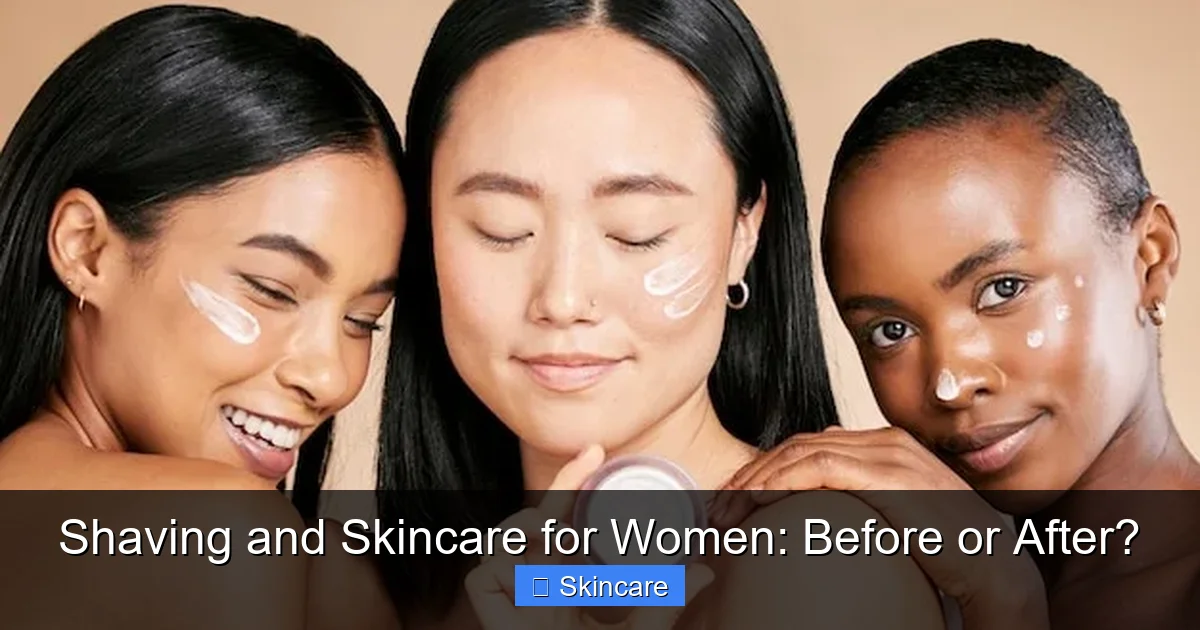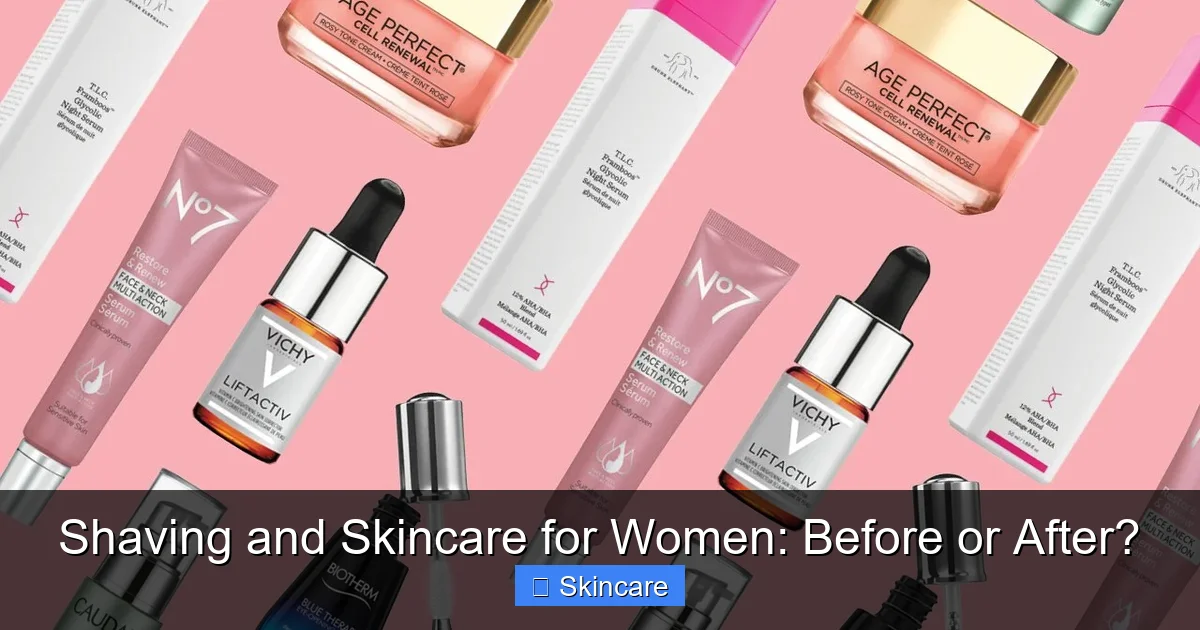
Featured image for this comprehensive guide about should men use different skincare to women
Image source: cdn.shopify.com
Men vs. Women’s Skincare: Unpacking the Differences (and Similarities!)
Walk into any beauty store, and you’ll likely see two distinct aisles: one brimming with products labeled “for her” and another with sleek, often darker packaging boasting “for him.” This clear division begs a persistent question: should men use different skincare to women? Is it all just clever marketing, or are there fundamental physiological distinctions that truly necessitate separate routines and products? It’s a debate that often leaves many confused, wondering if they’re missing out or simply falling for a gimmick.
In this comprehensive guide, we’re diving deep into the science and the marketing behind gender-specific skincare. We’ll explore the real skincare differences men women face, debunk myths, and provide actionable insights to help everyone, regardless of gender, achieve their healthiest, most radiant skin. Prepare to discover that while some distinctions exist, the core principles of effective skincare are surprisingly universal.
📋 Table of Contents
- Understanding the Core Physiological Differences Between Male and Female Skin
- Is “Men’s Skincare” Just a Marketing Gimmick?
- Key Skincare Needs: Where Men and Women Converge and Diverge
- Building an Effective Skincare Routine: It’s About Skin Type, Not Gender
- Practical Skincare Advice for Men: Tailoring Your Routine
- Male vs. Female Skin Characteristics: A Quick Comparison
- Conclusion: Focus on Your Skin, Not the Label
Understanding the Core Physiological Differences Between Male and Female Skin
While we all share the same basic skin structure, subtle yet significant biological factors contribute to why male skin vs female skin can feel and behave differently. These differences are primarily driven by hormones.
Hormonal Influences
- Testosterone: The dominant male hormone, testosterone, plays a crucial role in shaping male skin characteristics. It leads to thicker skin, greater collagen density, larger pores, and increased sebum production. This often translates to oilier skin and a higher propensity for acne during adolescence and beyond.
- Estrogen: In women, estrogen influences skin elasticity, hydration, and collagen production. Fluctuations during menstrual cycles, pregnancy, and menopause can significantly impact skin health, often leading to dryness, sensitivity, or breakouts. Post-menopause, declining estrogen levels contribute to accelerated collagen loss and thinning skin.
Skin Thickness and Collagen Density
On average, men’s skin is approximately 25% thicker than women’s. This is largely due to higher collagen density, which gives male skin a firmer, more taut appearance. This higher collagen content also means that men typically show visible signs of aging, like fine lines and wrinkles, later than women do. However, when these wrinkles do appear, they often tend to be deeper and more pronounced.
| Skin Characteristic | Male Skin Trait | Female Skin Trait | Skincare Implication |
|---|---|---|---|
| Skin Thickness | Approximately 20-25% thicker and tougher due to higher collagen density. | Thinner and more delicate, making it more prone to environmental sensitivity. | Men’s skin can often tolerate stronger active ingredients; women may need gentler, barrier-supporting formulations. |
| Sebum Production | Higher testosterone levels lead to 2x more active sebaceous glands, resulting in oilier skin and larger pores, more prone to acne. | Less sebum production and smaller pores generally, though hormonal fluctuations can cause localized oiliness or breakouts. | Men often benefit from oil-controlling and pore-minimizing products. Women require balanced formulations to manage varying skin needs. |
| Collagen Density & Aging | Higher collagen density initially; collagen loss is more gradual until later age, leading to slower visible aging. | Lower collagen density; faster collagen loss (especially post-menopause) results in earlier appearance of fine lines and wrinkles. | Men may focus on anti-aging later. Women often prioritize preventative anti-aging earlier and products targeting elasticity and lines. |
| Facial Hair & Shaving | Denser hair follicles; daily shaving causes micro-traumas, irritation, razor burn, and ingrown hairs. | Finer vellus hair; typically no daily facial shaving, less frequent direct skin trauma. | Men need soothing, post-shave balms and exfoliants to prevent irritation/ingrown hairs. Women’s routines rarely account for such trauma. |
Sebum Production and Pore Size
Thanks to androgen hormones, men typically have more active sebaceous glands, leading to increased sebum (oil) production. This results in generally oilier skin and noticeably larger pores compared to women. This oiliness can make men’s skincare more focused on oil control and preventing clogged pores, which often lead to breakouts.
Hair Follicles and Shaving Habits
Perhaps the most obvious difference is the presence of significant facial hair in men and the daily ritual of shaving. Regular shaving, while a common practice, can cause micro-traumas to the skin, leading to irritation, razor burn, nicks, and ingrown hairs. This constant stress demands specific attention in skincare for men, particularly for soothing and healing post-shave skin.
Is “Men’s Skincare” Just a Marketing Gimmick?
It’s easy to be cynical about the “for men” label on skincare products. Often, the ingredients list for a “men’s” moisturizer looks strikingly similar to its “women’s” counterpart from the same brand. So, is it just clever marketing?

Learn more about should men use different skincare to women – Shaving and Skincare for Women: Before or After?
Image source: img.freepik.com
To a large extent, yes, marketing plays a significant role. Brands strategically segment the market to appeal to different consumer groups. For skincare products for men, this often means:
- Packaging: More utilitarian, darker colors (grays, blues, blacks), and minimalist designs.
- Scents: Earthy, woody, musky, or fresh “sporty” fragrances, avoiding floral or overtly sweet aromas.
- Texture: Often lighter, faster-absorbing formulas, appealing to men who prefer less fuss.
- Messaging: Emphasizing simplicity, efficacy, and addressing specific concerns like razor burn or oiliness.
While the core active ingredients (like hyaluronic acid, niacinamide, or SPF) might be identical, the delivery system, fragrance, and overall brand experience are tailored to attract male consumers. This doesn’t mean the products are ineffective; it just means that the “gender-specific” aspect often lies more in presentation than in a fundamentally different scientific formulation.
Key Skincare Needs: Where Men and Women Converge and Diverge
When considering gender-specific skincare, it’s helpful to look at both universal needs and those that might be more prominent for one gender.

Learn more about should men use different skincare to women – Shaving and Skincare for Women: Before or After?
Image source: chatelaine.com
Universal Skincare Needs (Applicable to All Skin Types, Regardless of Gender):
- Cleansing: Removing dirt, oil, and impurities is fundamental for healthy skin.
- Moisturizing: Hydration is crucial for maintaining the skin’s barrier function and preventing dryness.
- Sun Protection (SPF): The most important anti-aging and preventative step for everyone. UV damage causes premature aging and increases skin cancer risk.
- Antioxidants: Ingredients like Vitamin C and E protect skin from environmental damage.
- Exfoliation: Helps shed dead skin cells, promoting a brighter complexion and preventing clogged pores.
Divergent Skincare Needs (Often More Prominent for Specific Genders):
- For Men:
- Post-Shave Care: Soothing irritation, preventing razor burn and ingrown hairs.
- Oil Control: Managing excess sebum production and larger pores.
- Rougher Skin Texture: Sometimes requiring stronger exfoliation.
- For Women:
- Hormonal Fluctuations: Addressing concerns related to menstrual cycles, pregnancy, and menopause (e.g., melasma, increased dryness, sudden breakouts).
- Targeted Anti-Aging: Often an earlier focus on fine lines, loss of elasticity, and hyperpigmentation.
- Makeup Removal: Specific cleansing needs to effectively remove cosmetics.
Building an Effective Skincare Routine: It’s About Skin Type, Not Gender
The overwhelming consensus among dermatologists is that effective skincare is less about your gender and more about your skin type and specific concerns. Whether you’re a man or a woman, your skin can be oily, dry, combination, sensitive, or normal. Your routine should be tailored to these factors, along with any particular issues like acne, rosacea, hyperpigmentation, or sensitivity.
An effective skincare routine for men or women follows these basic steps:
- Cleanse: Use a gentle cleanser suited to your skin type twice daily.
- Treat: Apply serums or treatments targeting specific concerns (e.g., salicylic acid for acne, Vitamin C for brightening, hyaluronic acid for hydration, retinoids for anti-aging).
- Moisturize: Hydrate your skin to maintain its barrier. Choose a moisturizer based on your skin type (gel for oily, cream for dry).
- Protect: Always finish with a broad-spectrum SPF 30+ sunscreen every morning, rain or shine.
The beauty of modern skincare is its versatility. Many fantastic products are “universal skincare,” formulated to benefit anyone, regardless of their gender identity. Focus on active ingredients and product benefits, not just the marketing on the label.
Practical Skincare Advice for Men: Tailoring Your Routine
While the core principles are universal, men do have some unique considerations, primarily revolving around facial hair and typically oilier skin. Here are some actionable skincare tips for men:
Pre and Post-Shave Care
Shaving is a crucial step that can significantly impact skin health. Incorporate these tips:
- Prepare: Shave after a warm shower to soften hair and open pores. Use a quality shave cream or gel to reduce friction.
- Technique: Use a sharp, clean razor. Shave with the grain of your hair to minimize irritation. Rinse the blade frequently.
- Soothe: Immediately after shaving, rinse with cool water to close pores. Apply an alcohol-free aftershave balm or a soothing moisturizer containing ingredients like aloe vera, chamomile, or allantoin to calm the skin and prevent irritation.
- Prevent Ingrown Hairs: Regular, gentle exfoliation (chemical exfoliants like BHAs are excellent) can help prevent ingrown hairs, especially for men prone to them.
Addressing Oily Skin & Acne
If you have oily or acne-prone skin, look for products with:
- Salicylic Acid (BHA): Excellent for penetrating oil and unclogging pores.
- Niacinamide (Vitamin B3): Helps regulate oil production and reduce inflammation.
- Lightweight Moisturizers: Opt for gel or fluid formulations that won’t feel heavy or greasy.
Anti-Aging for Men
Although men’s skin shows aging later, consistent care is key for long-term health and appearance:
- Consistent SPF: This remains your #1 defense against premature aging.
- Retinoids: Consider incorporating a retinoid (retinol or tretinoin) to stimulate collagen production and improve skin texture.
- Antioxidant Serums: Vitamin C serum in the morning provides environmental protection and brightening benefits.
Simplicity vs. Complexity
Many men prefer a minimalist approach. Look for multi-tasking products like a moisturizer with SPF or a cleanser that also gently exfoliates. A simple, consistent routine is always more effective than an elaborate, sporadic one.
Male vs. Female Skin Characteristics: A Quick Comparison
Here’s a summary of the general distinctions between male and female skin:
| Characteristic | Male Skin (Generally) | Female Skin (Generally) |
|---|---|---|
| Thickness | Approximately 25% thicker | Thinner than male skin |
| Collagen Density | Higher, leading to firmer skin | Lower, more prone to elasticity loss over time |
| Sebum Production | Higher (more oily, larger pores) | Lower (can be prone to dryness) |
| pH Level | Generally lower (more acidic) | Slightly higher |
| Aging | Slower initial onset of fine lines/wrinkles, but deeper wrinkles later | Earlier onset of fine lines/wrinkles, more pronounced loss of firmness |
| Facial Hair | Significant, requiring regular shaving | Less significant facial hair on face |
| Daily Trauma | Regular shaving causes irritation and micro-damage | Less frequent direct facial skin trauma |
Conclusion: Focus on Your Skin, Not the Label
So, should men use different skincare to women? The answer is nuanced. While physiological differences exist, largely driven by hormones and lifestyle factors like shaving, the fundamental needs of the skin remain the same: cleansing, hydrating, protecting, and treating specific concerns. Marketing often exaggerates these differences to create separate product categories.
Ultimately, the most effective approach to skincare is to ignore gender labels and instead focus on understanding your own unique skin type and concerns. Whether you’re a man or a woman, your skin will thrive with a routine tailored to its specific needs. Embrace the world of skincare without stigma, experiment with ingredients, and remember: healthy skin is for everyone. Listen to your skin, not just the labels on the bottle!
🎥 Related Video: How to shave correctly | Dermatologist Suggest
📺 Dr. Aanchal MD
Shaving the right way can totally change your skin game—less irritation and fewer bumps Hydrate, exfoliate, and use a gentle …
Frequently Asked Questions
Do men and women have inherently different skin types?
Yes, there are some biological differences that impact skin characteristics. Men’s skin is generally thicker, oilier due to more active sebaceous glands, and has a higher collagen density, which can make it appear firmer and age differently.
Should men use different skincare to women, or can they share products?
While some basic hydrating products can be shared, men often benefit from products formulated for their specific skin characteristics. Their skin tends to be oilier and can be prone to irritation from shaving, necessitating different ingredients or formulations that address these unique concerns.
What are the primary differences in skincare needs between men and women?
Men’s primary skincare needs often revolve around managing oil production, soothing post-shave irritation, preventing ingrown hairs, and repairing the skin barrier after shaving. Women’s needs might focus more on hormonal changes, addressing diverse signs of aging, and varying cosmetic preferences.
Is “men’s skincare” just a marketing gimmick, or is it genuinely different?
While marketing plays a role in product differentiation, there are genuine physiological differences that support men using specific skincare products. Formulations for men often consider factors like increased oil production, a lower skin pH, and the daily trauma of shaving, making some distinctions beneficial.
Can men effectively use skincare products marketed towards women?
Yes, in many cases, men can use skincare products marketed towards women, especially for universal concerns like hydration or sun protection. However, men with very oily skin might find some women’s products too rich, or they may lack specific benefits tailored for common male concerns like shaving irritation.
How does shaving impact whether men should use different skincare products?
Shaving is a significant factor unique to men’s facial skincare, directly influencing product needs. It exfoliates the skin, can cause micro-cuts and irritation, and strips away natural oils, necessitating products that soothe, heal, prevent ingrown hairs, and restore the skin’s barrier.
